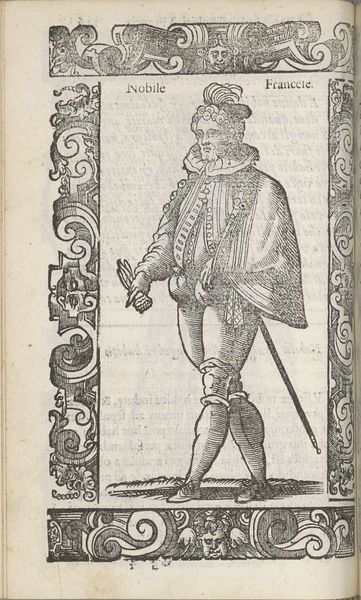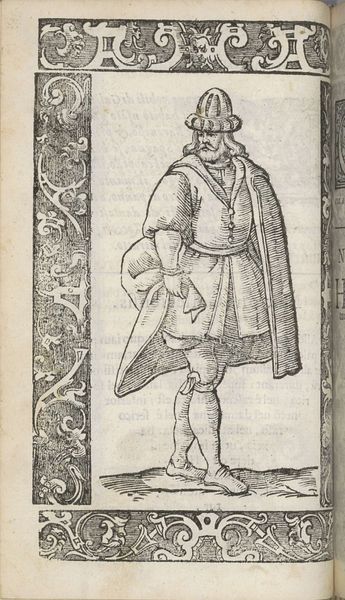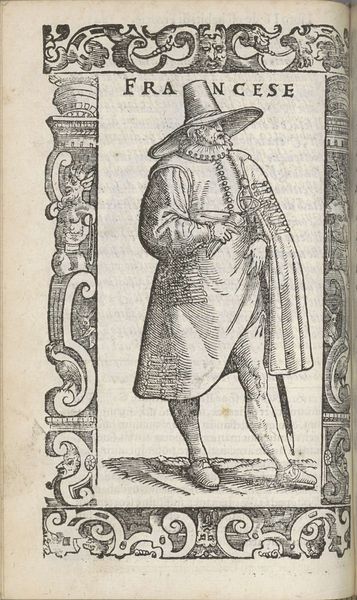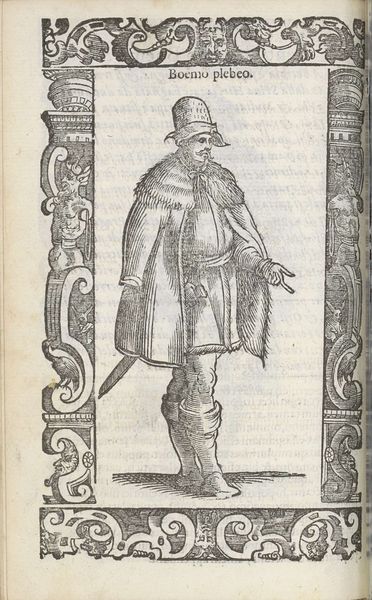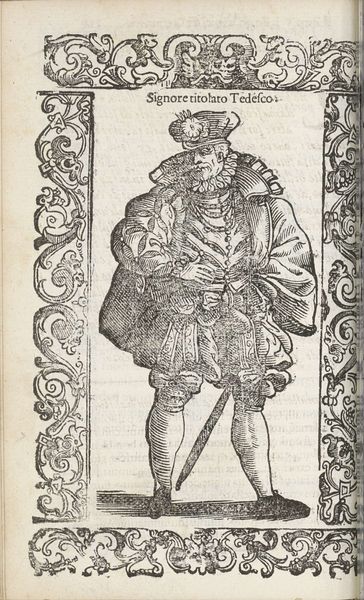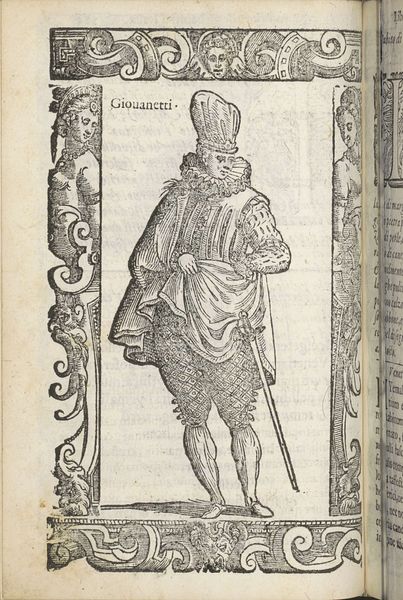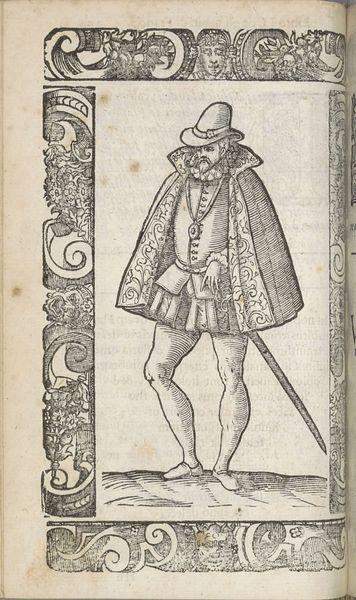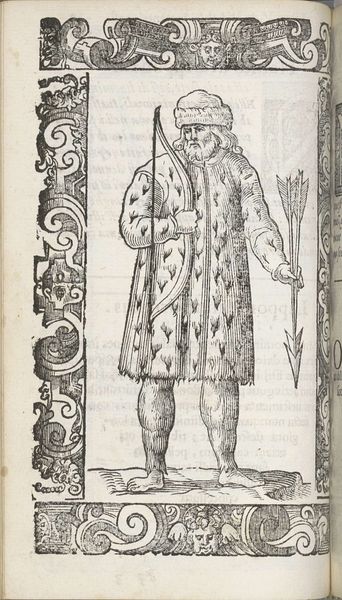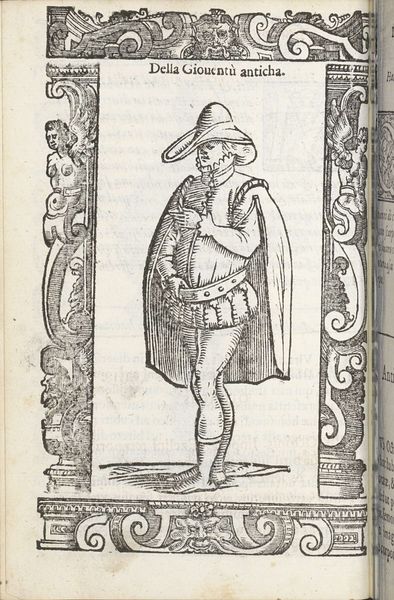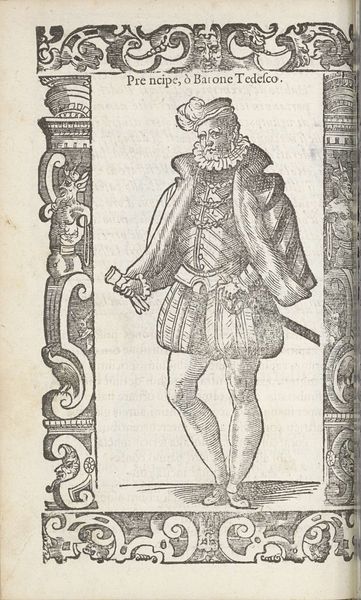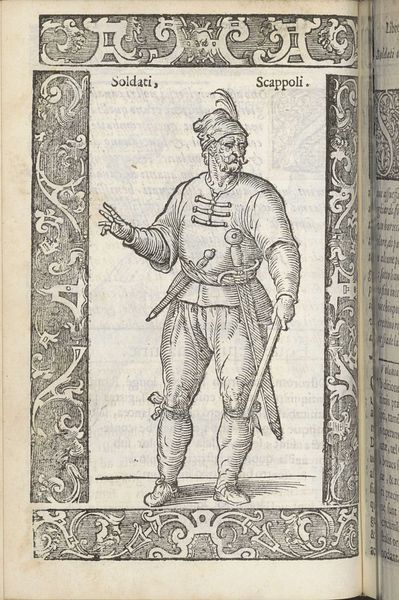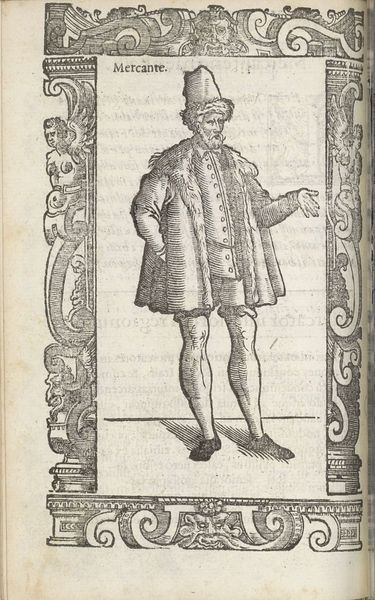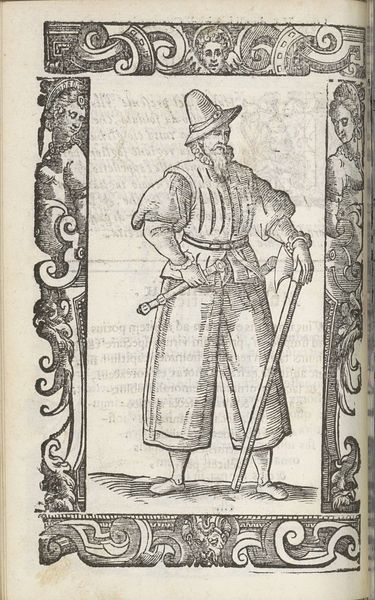
print, engraving
#
portrait
#
pen drawing
# print
#
figuration
#
italian-renaissance
#
engraving
Dimensions: height 167 mm, width 125 mm
Copyright: Rijks Museum: Open Domain
Editor: Here we have Christoph Krieger's "Nobile di Borgogna" from 1598, an engraving. I’m struck by the detail, especially considering it’s a print. It seems to celebrate wealth, through the nobleman’s clothing, but also something about social roles during the Italian Renaissance. What can you tell me about this artwork? Curator: Look closely at the lines. The material is secondary to its economic and cultural impact, consider the role of printmaking in disseminating images and ideas. The labor involved is complex, with skilled artisans reproducing designs for mass consumption. Ask yourself, who was buying these prints, and what did it mean to possess images of nobility? Editor: So, it's less about the individual nobleman, and more about the system that allows his image to be circulated? The production of these prints. Curator: Precisely. Notice how the ornate border around the figure mirrors the embellishments on his clothing. What kind of machinery and division of labour went into manufacturing the clothing itself, which has been reproduced in print. Editor: Right. All of this suggests the craftsman labor needed for clothing creation and print replication, impacting the trade economy, like in Venice or Florence. The patterns of the frame and costume, which are printed on paper, makes them even more similar! Curator: Indeed! It disrupts our understanding of hierarchy and authorship by demonstrating art's capacity to represent tangible and intangible values through cultural objects, and their means of fabrication. It questions the boundary between high art and popular culture by showing craftsmanship techniques applied throughout both costume construction and print production. Editor: I never thought of it that way, how prints could be consumed and disseminated. Curator: The work encourages one to consider the circulation of this image; how it became accessible as a product within a broader exchange of cultural goods at that time. Editor: That's a fantastic insight! It really shows that the impact lies not only on the representation of nobility, but it extends far beyond; influencing manufacture, materials and commercial circulation through skilled production.
Comments
No comments
Be the first to comment and join the conversation on the ultimate creative platform.
